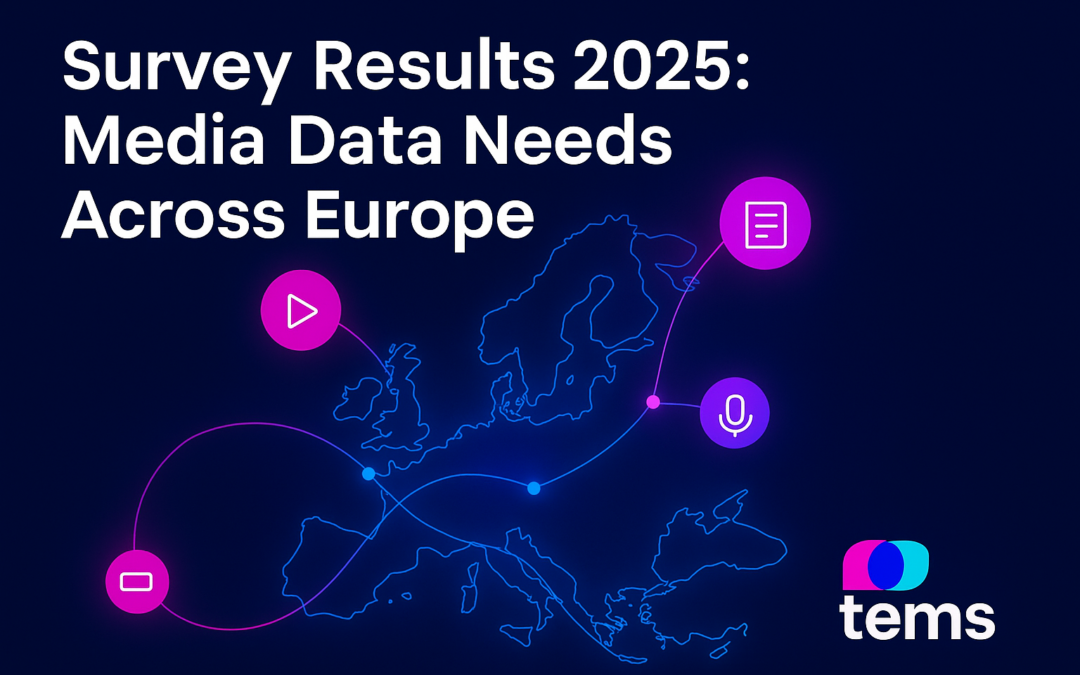This consultation is not just a snapshot. It is the starting point of a new phase: one in which TEMS will use these insights to ensure that our work reflects the realities, challenges, and ambitions of those who make and shape media in Europe.
Everything is data in the digital world
The survey confirms that data is no longer a by-product of media activities—it is at the centre of everyday operations. Six broad categories of data, commonly used by the respondents, were identified:
- Research & Knowledge Data
- Content & Media Data
- Rights & Licensing Data
- Audience, Market & Advertising Data
- Technical & Industrial Data
- Official & Administrative Data
Fragmented approaches to strategy and management
When asked about data strategies, organisations revealed three distinct situations: some have no strategy at all, others have partial or fragmented strategies, and a minority have fully implemented frameworks. The main barriers remain limited resources, technical complexity, and a lack of prioritisation at management level.
Data management practices are equally diverse, ranging from dedicated officers to distributed responsibilities. This variety underlines why a common space is needed: individual efforts are not enough.
Pressing challenges
Participants were candid about the obstacles they face: the erosion of business models in the age of free digital content, the integration of AI without losing stability or values, fragmented infrastructures, regulatory asymmetries, financial constraints, and sustainability concerns.
One comment summarised the sector’s dilemma well: “The challenge of effectively monetizing digital content in a context of abundant free content, requiring the implementation of innovative and attractive business models.”
A strong case for a European media data space
Despite the difficulties, there is optimism. Respondents see real value in joining a secure, collaborative data space. Benefits include:
- Stronger interoperability and standardisation
- Greater trust and transparency in data use
- Enhanced negotiating power vis-à-vis dominant global players
- Opportunities for collaboration, innovation, and collective intelligence
- A step toward European digital sovereignty
In other words, they see it as a way to strengthen end-user trust through increased transparency and traceability of data exchanged within a secure and controlled framework.
AI vs. Intellectual Property
AI is already part of media workflows, whether for translation, transcription, metadata enrichment, or creative applications. However, adoption is uneven, with organisations ranging from early-stage testers to advanced in-house developers. Restrictions often reflect concerns about privacy, intellectual property, and ethics.
One respondent explained: “AI is used for translation, transcription, voice-to-text, metadata enrichment, and creative tasks — but we restrict it when privacy or intellectual property risks are involved.”
Towards the next phase
The message from the survey is clear: the European media sector is aware of the centrality of data but struggles with fragmentation, resource constraints, and governance gaps. At the same time, there is a strong appetite for collaborative, trusted solutions that reflect European values.
For TEMS, this marks a turning point. The results provide us with a roadmap of real-world needs and priorities. The next phase of our work will be to translate these findings into concrete services, governance models, and safeguards—always with the aim of making data work for media, and not the other way around.
This is just the beginning. By working together, we can build a media data space that strengthens Europe’s media ecosystem, ensures fair value distribution, and fosters innovation grounded in trust.
